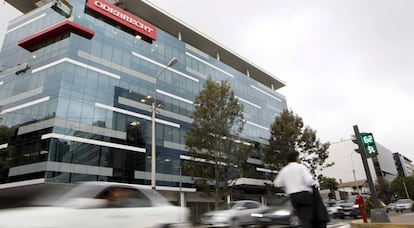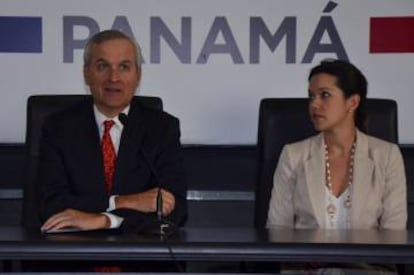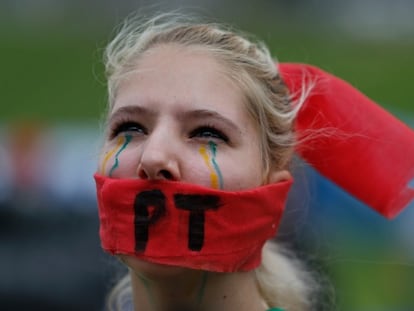Odebrecht bribe scandal reveals depth of corruption in Latin America
Construction firm has reached global settlement to end investigations in the US, Brazil and Switzerland
Founded in the 1940s, the Brazilian construction firm Odebrecht prospered in Latin America through large infrastructure projects. With a presence in 27 countries, the company has built subway lines in Peru, power dams in Panama and roads in Argentina. But there was a trick to the success story.

The company has now agreed to pay a record $3.5 billion penalty after being accused of paying $439 million to politicians, political parties and government workers in at least 12 countries in exchange for public works contracts.
Some of the countries where Odebrecht bribed officials include Argentina, Brazil, Colombia, Dominican Republic, Ecuador, Guatemala, Mexico, Panama, Peru and Venezuela.
The company, which has 128,000 employees and gross annual revenue of $40 billion, plays a pivotal role in the corruption scheme uncovered by Operation Car Wash (Lava Jato in Portuguese). Since 2014, investigators have been picking apart a complex and longstanding web of kickbacks at the state-owned oil company Petrobras.
Brazil, Odebrecht’s homeland, is not even the most corrupt nation in Latin America
Peter Hakim, Inter-American Dialogue chairman
Odebrecht had been signing contracts with Petrobras since the 1950s. It took investigators over a year to find the first pieces of evidence, and these led to Marcelo Odebrecht, CEO and grandson of the company founder, who was sentenced to prison in June 2015.
As the probe proceeds, the company has become a very real threat to representatives of political power across Latin America: presidents, former presidents and congress-members in various countries have already been named by company officials anxious to cooperate with the justice system in order to become eligible for sentence reductions.
Settlement
Odebrecht’s CEO and a team of 77 top executives have negotiated deals in exchange for information. Marcelo Odebrecht was sentenced to 19 years for crimes ranging from money laundering to criminal association. The company agreed on a settlement deal to end proceedings in the US, Brazil and Switzerland.
The US State Department has yet to divulge the names of any authority outside Brazil involved in the scandal, but prominent figures are widely expected to be on the list.

Odebrecht has admitted to paying $29 million in bribes to Peruvian government workers between 2005 and 2014. This covers the period under three presidents: Alejandro Toledo (2001-2006), Alan García (2006-2011) and Ollanta Humala (2011-2016). In February of last year, Humala was named as a recipient of $3 million in bribes from Odebrecht. The former leader has denied the charges.
In Panama, there is speculation that one of the beneficiaries of the kickbacks is Luis Enrique Martinelli Linares, one of the sons of former president Ricardo Martinelli (2009-2014). Both men have also denied the charges.
In Argentina, officials in the Cristina Fernández de Kirchner administrations are thought to have accepted over $35 million in connection with three infrastructure projects between 2007 and 2014.
And in Venezuela, whistleblowers have mentioned a $3 million contribution to the campaigns of the late Hugo Chávez and the current president, Nicolás Maduro.
Offshore network
In every country, the operating system was the same: Odebrecht used a sophisticated network of offshore firms to pay the bribes. On the Caribbean island of Antigua, it even purchased a local bank to make the transactions easier.
Authorities say that Odebrecht used different “layers of money laundering” to hide its tracks. The payments to government officials were made from the company’s Structured Operations Sector, which came to be known as the “bribes department.” It had a parallel accounting system, backed the funds and authorized the transfers with oversight from the CEO himself.
The US State Department has yet to divulge the names of any authority outside Brazil involved in the scandal
News about the settlement deal saw authorities in the nations involved react swiftly. Prosecutors in Argentina, Peru, Colombia, Panama and Ecuador have announced their own bribery investigations. In Mexico, the government and the oil company Pemex said they will also investigate the matter.
But the documentation released by the US justice system could well be just the tip of the iceberg of this international corruption scheme.
English version by Susana Urra.
An entrenched habit
The Odebrecht corruption scandal is not the first in the continent, although it is the first time that such an abundance of details has emerged.
“This has always been the way that politicians and businessmen do business in the region,” says Peter Hakim, an expert on international relations and chairman of the Inter-American Dialogue think tank.
And Hakim adds a thought that lends even greater gravity to the problem.
“Brazil, Odebrecht’s homeland, is not even the most corrupt nation in Latin America, according to Transparency International. This gives you a sense of the scope of the problem that the continent faces,” he notes.
According to the international organization, Brazil ranked 76th with a score of 38, on a list of 168 countries on a scale where 0 means very clean and 100 means highly corrupt. Peru ranked 88th with a score of 36, Argentina 107th with a score of 32 and Venezuela 158th with a score of 17.
Tu suscripción se está usando en otro dispositivo
¿Quieres añadir otro usuario a tu suscripción?
Si continúas leyendo en este dispositivo, no se podrá leer en el otro.
FlechaTu suscripción se está usando en otro dispositivo y solo puedes acceder a EL PAÍS desde un dispositivo a la vez.
Si quieres compartir tu cuenta, cambia tu suscripción a la modalidad Premium, así podrás añadir otro usuario. Cada uno accederá con su propia cuenta de email, lo que os permitirá personalizar vuestra experiencia en EL PAÍS.
¿Tienes una suscripción de empresa? Accede aquí para contratar más cuentas.
En el caso de no saber quién está usando tu cuenta, te recomendamos cambiar tu contraseña aquí.
Si decides continuar compartiendo tu cuenta, este mensaje se mostrará en tu dispositivo y en el de la otra persona que está usando tu cuenta de forma indefinida, afectando a tu experiencia de lectura. Puedes consultar aquí los términos y condiciones de la suscripción digital.
More information
Archived In
Últimas noticias
Mexico seeks to shore up its defenses following US incursion in Venezuela
Hope gives way to uncertainty among Venezuelan exiles in the US after Maduro’s capture
Cubans look to Venezuela fearfully after Trump’s incursion: ‘We could be next’
The operation in Venezuela to capture Maduro threatens to widen the cracks in the MAGA movement
Most viewed
- Alain Aspect, Nobel laureate in physics: ‘Einstein was so smart that he would have had to recognize quantum entanglement’
- Gilles Lipovetsky: ‘If you want to live better and fall in love, take Prozac, don’t look to philosophy’
- Alvin Hellerstein, a 92-year-old judge appointed by Bill Clinton, to preside over Maduro’s trial in New York
- Cuba confirms death of 32 of its citizens in the US attack against Venezuela
- Why oil has been at the center of Venezuela-US conflicts for decades











































